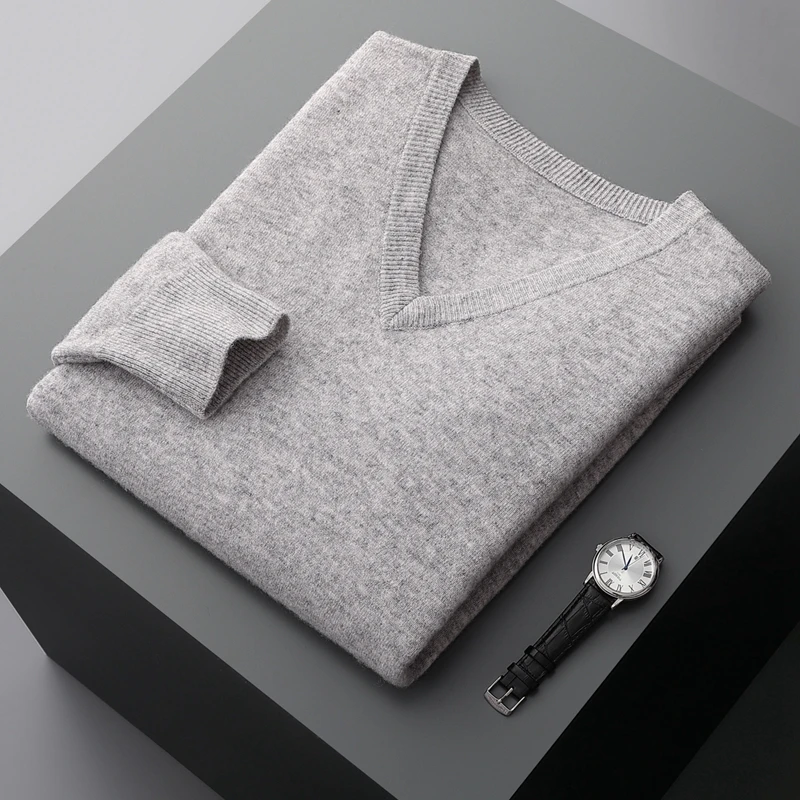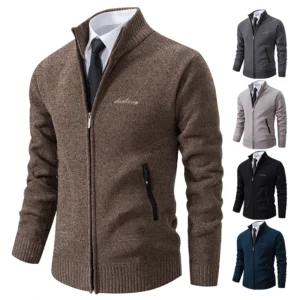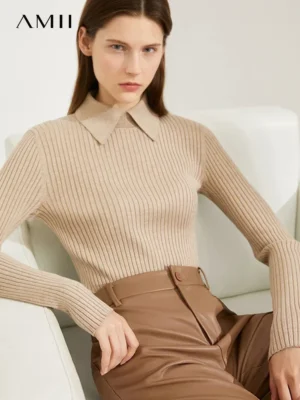Why Cashmere is Your Essential Transitional Wardrobe Solution
Those in-between seasons can be particularly challenging when it comes to getting dressed. One day it’s warm and sunny, the next brings cool winds and clouds. This is where transitional dressing comes into play, and no fabric handles these shifting conditions quite like cashmere.
Cashmere stands apart from other materials because it offers remarkable temperature regulation. The natural fibers create a microclimate against your skin, providing insulation when it’s cool while allowing heat to escape when temperatures rise. This makes cashmere perfect for transitional weather when you need adaptable clothing that works throughout the day.
What makes cashmere truly exceptional is its impressive warmth-to-weight ratio. Unlike bulkier wools or synthetic materials, cashmere provides significant warmth without the heaviness. This lightweight quality allows for comfortable layering and easy adaptation as temperatures fluctuate throughout the day.
When you invest in quality cashmere, you’re not just buying for one season—you’re acquiring pieces that transcend seasonal limitations. The natural properties of cashmere make it ideal for wear nearly year-round with appropriate styling, offering exceptional value despite the higher initial cost.
Key benefits of cashmere for transitional seasons include:
- Exceptional insulation without bulk or weight
- Natural breathability that prevents overheating
- Moisture-wicking properties that keep you comfortable
- Soft texture that allows for comfortable layering
- Elegant drape that elevates any outfit
Essential Cashmere Pieces for Transitional Weather
The Lightweight Cashmere Sweater
The foundation of any transitional wardrobe begins with a well-crafted lightweight cashmere sweater. What makes these pieces particularly suitable for changing seasons is their construction—typically featuring single or ultra-fine 2-ply cashmere with a looser knit structure that provides warmth without overheating.
These versatile pieces can be worn alone during milder days or layered under jackets and coats when temperatures drop. For maximum versatility, consider investing in a few different neckline options: a crew neck for classic styling, a V-neck for a more feminine or dressed-up look, and perhaps a turtleneck for those particularly brisk days.
When building your collection of quality cashmere sweaters, begin with neutral colors like camel, navy, gray, or black that serve as the backbone of your transitional wardrobe. Once you have these basics covered, introduce seasonal accent colors—perhaps dusty rose or sage green for spring, or burgundy and mustard for fall—to keep your wardrobe fresh and current.
The Versatile Cashmere Cardigan
Few garments offer as much transitional flexibility as a well-designed cashmere cardigan. These layering pieces function beautifully as lightweight jacket alternatives while providing elegant structure to any outfit.
When selecting from various cashmere cardigan styles, consider how different designs serve different purposes. Open-front, drapey cardigans create fluid, relaxed silhouettes perfect for casual settings, while button-front options provide more structure and polish for professional environments. Length matters too—hip-length cardigans pair beautifully with higher-waisted bottoms, while longer styles create dramatic lines and provide more coverage.
The true genius of the cashmere cardigan lies in its adaptability throughout the day. Wear it buttoned as a standalone top in the morning, open as a layer in climate-controlled environments, or remove it entirely during warmer afternoon hours. This versatility makes it an indispensable transition piece.
The Multipurpose Cashmere Wrap
For unmatched versatility in changing weather, the cashmere wrap deserves special attention. These generous, fluid pieces transform to meet your needs throughout the day and across various settings.
The beauty of cashmere wrap sweaters lies in their multiple wearing options. Drape one loosely over your shoulders on a mild morning, secure it with a belt for structure during cooler hours, wrap it scarf-style when the wind picks up, or even use it as a cozy layer during evening temperature drops.
For travelers dealing with unpredictable weather, a quality cashmere wrap is invaluable. Look for options with enough size to provide meaningful coverage (approximately 28” × 80” works well for most) and a medium weight that provides warmth without excessive bulk.
When selecting colors, consider both your existing wardrobe and the transitional seasons when you’ll most frequently wear the wrap. Sophisticated neutrals like camel, charcoal, or navy provide maximum versatility, while subtle patterns like herringbone or understated plaids add visual interest without limiting pairing options.
Elevated Cashmere Basics
Taking your transitional wardrobe to the next level means considering cashmere versions of everyday essentials. Cashmere t-shirts, tanks, and lightweight shells form the building blocks of sophisticated layered looks while offering superior comfort and temperature regulation.
These elevated basics serve as foundation pieces, creating a luxurious first layer against your skin. When selecting these items, look for fine-gauge knits that lie smoothly under additional layers without adding bulk. The ideal weight provides just enough structure to wear alone on milder days while remaining thin enough for comfortable layering.
What distinguishes these cashmere basics from their cotton counterparts is their inherent elegance—the subtle luster and exceptional drape immediately elevate even the most casual outfits. A simple cashmere tee with well-fitting jeans projects effortless sophistication that cotton simply can’t match, while providing the practical benefits of temperature regulation throughout changing weather.
Advanced Layering Techniques with Cashmere
Effective layering with cashmere transforms your wardrobe’s functionality during unpredictable transitional weather. The key lies in understanding how different fabrics interact and how to build adaptable outfits that can be modified throughout the day.
Building the Perfect Base Layer
Your layering strategy begins with selecting the right foundation. The ideal base layer under cashmere should be smooth, thin, and free from excess bulk that could distort the drape of your cashmere pieces.
Fabrics that pair exceptionally well under cashmere include:
- Silk or silk blends: These create a frictionless surface that allows cashmere to move freely
- Fine cotton: Lightweight cotton basics provide breathability while maintaining a slim profile
- Modal or Tencel: These sustainable options offer silky smoothness with excellent temperature regulation
Pay careful attention to necklines and sleeve lengths when selecting base layers. For versatility, choose styles with necklines that won’t peek out from under your cashmere unless that’s your intended look. Sleeve length coordination is equally important—consider how different combinations will look if you push up your cashmere sleeves or remove layers throughout the day.
To prevent static cling—especially common during dry transitional months—look for base layers with a touch of natural fiber content rather than full synthetics. A light spritz of static guard on your base layer (never directly on cashmere) can also help maintain your cashmere’s beautiful drape.
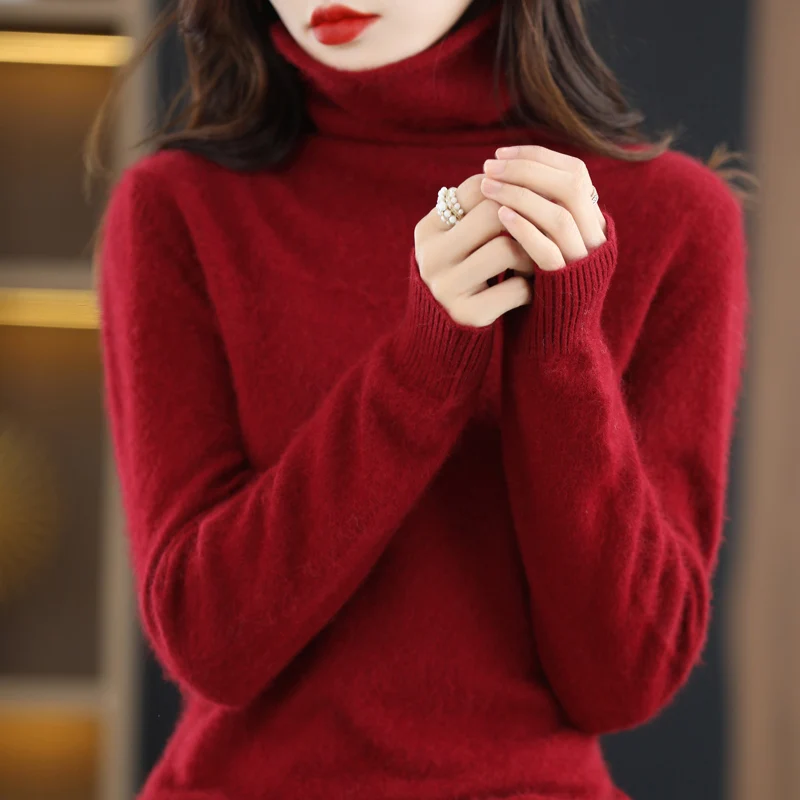
Strategic Mid-Layer Selection
The cashmere piece you choose as your mid-layer should be selected with both the day’s forecast and your planned activities in mind. This layer often becomes your primary visible garment when indoor temperatures rise.
For days with moderate temperature fluctuations, lightweight cashmere sweaters and cardigans in the 1-2 ply range provide ideal versatility. When sharper temperature drops are expected, opt for slightly heavier 3-ply options or more substantial knit patterns that trap additional warm air.
Proportion awareness is essential when selecting your cashmere mid-layer. Consider how the silhouette will work both under an outer layer and as a standalone piece. For example, a more fitted cashmere sweater typically layers more smoothly under structured jackets, while relaxed styles may work better with flowy outer layers or on their own.
To maintain mobility and comfort in layered outfits, pay attention to the length and fit of each piece. Slightly shorter mid-layers often work best under longer outer layers, while matching lengths can create clean lines when your outfit is fully assembled.
Adaptable Outer Layer Options
Your choice of outer layer determines how effectively your cashmere transitions from cool mornings to warmer afternoons and back to cool evenings. The ideal options provide meaningful warmth without compressing or damaging the delicate cashmere beneath.
Versatile outer layers that complement cashmere beautifully include:
- Unlined trench coats: These classic pieces provide wind protection without overheating
- Lightweight wool blazers: Structured enough for polish but not so heavy they crush cashmere
- Oversized shirt jackets: Casual yet refined options for weekend transitional dressing
- Quilted vests: Perfect for keeping your core warm while showcasing cashmere sleeves
The art of “de-layering” gracefully is particularly important during transitional seasons. Select outer pieces that can be easily folded or carried when removed—wrinkle-resistant fabrics and unstructured designs are ideal. Consider bringing a slim tote bag for carrying shed layers elegantly rather than having to tie them around your waist.
Styling Cashmere for Different Transitional Occasions
The true versatility of cashmere shines through when you understand how to adapt it for various settings. With thoughtful styling, the same quality cashmere pieces can carry you from professional environments to casual weekends to special occasions with versatile transitional elegance.
Professional Environments
Cashmere brings a refined sophistication to workplace settings while providing practical comfort during transitional seasons when office temperatures can be unpredictable.
For polished professional looks, try these cashmere-centered outfit formulas:
- A lightweight cashmere pullover in a jewel tone paired with tailored trousers and leather loafers
- A cashmere cardigan layered over a silk shell with a pencil skirt and pointed flats
- A fine-gauge cashmere turtleneck under a blazer with wide-leg pants and ankle boots
To elevate these professional cashmere looks, incorporate structured accessories that provide contrast to cashmere’s natural softness. A leather belt, architectural metal jewelry, or a structured handbag adds visual interest while maintaining professional polish.
The beauty of cashmere in professional settings lies in its ability to bridge formal and casual elements—perfect for modern workplaces with flexible dress codes or days that include both client meetings and casual team gatherings.
Weekend and Casual Settings
During off-duty hours in transitional seasons, cashmere adds effortless refinement to casual looks without sacrificing comfort or appearing overdressed.
For relaxed yet elevated weekend styling, consider these combinations:
- An oversized cashmere V-neck sweater with straight-leg jeans and white sneakers
- A cashmere hoodie paired with joggers and leather slip-on shoes
- A cashmere cardigan over a simple t-shirt with high-waisted denim and ballet flats
Denim and cashmere create a particularly harmonious pairing, with the structured ruggedness of quality denim providing perfect textural contrast to cashmere’s softness. For early transitional season, lighter washes and distressed details keep the look casual, while darker denim creates a more polished appearance for later season styling.
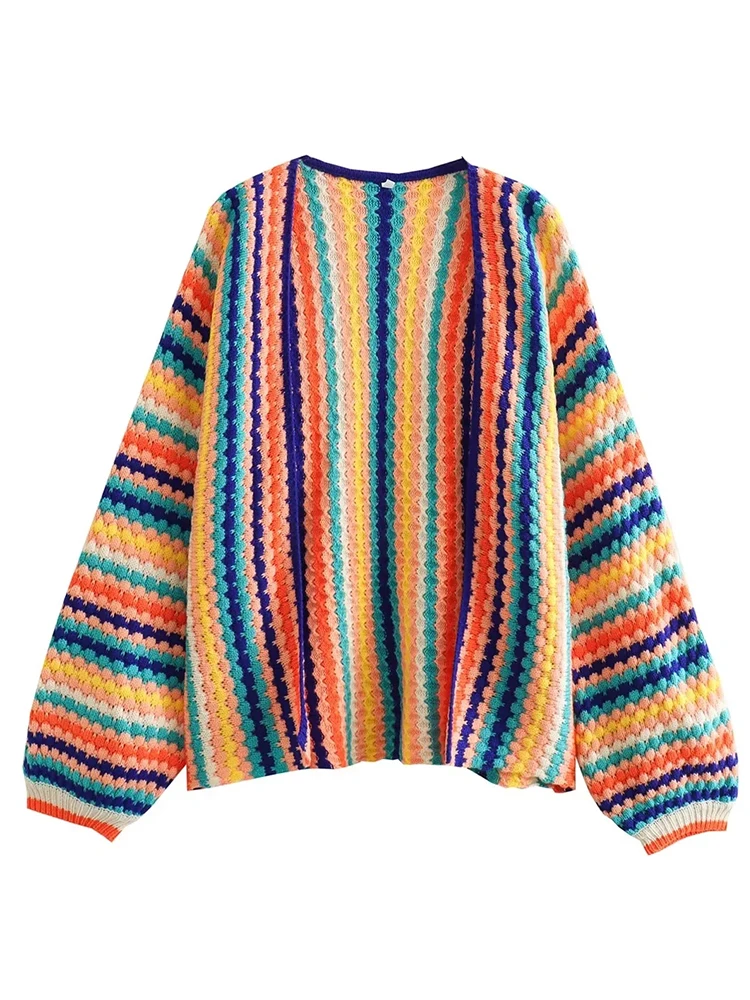
Footwear selection evolves naturally throughout transitional seasons—begin with loafers or ballet flats early in spring, transitioning to sandals as temperatures warm, or start with ankle boots in early fall, moving to more substantial options as winter approaches.
Evening and Special Occasions
Contrary to its daytime reputation, cashmere creates stunning evening looks with the right styling techniques. Its subtle luster captures light beautifully while providing practical warmth for evening temperature drops.
For elegant evening options, explore these unexpected cashmere combinations:
- A slim-fitting cashmere sweater tucked into a silk midi skirt with heeled sandals
- A cashmere wrap draped asymmetrically over a simple sheath dress
- A dramatic cashmere poncho over tailored cigarette pants and statement heels
Jewelry selection can transform cashmere from day to evening effortlessly. For daytime, minimal metal pieces complement cashmere’s natural elegance. For evening, consider adding sparkle through statement earrings or a bold cuff bracelet that creates compelling contrast against cashmere’s matte texture.
The temperature fluctuations common in transitional seasons make cashmere particularly valuable for evening events. A beautiful cashmere wrap provides both practical warmth and visual drama when arriving at or departing from evening functions.
Travel and On-the-Go
For travel during unpredictable transitional weather, cashmere provides unmatched versatility while maintaining elegance—a rare combination in travel-friendly clothing.
When packing cashmere for travel, focus on adaptable pieces for unpredictable weather that can be worn multiple ways:
- A cashmere travel wrap that functions as a scarf, shoulder covering, or blanket
- A medium-weight cardigan that works as both a layering piece and light jacket
- A simple crew neck sweater that pairs with everything from jeans to dress pants
To maximize packability, look for cashmere with a touch of resilience in the knit—pieces with a bit of tension in the stitches rather than extremely loose knits will better maintain their shape when packed. Roll rather than fold your cashmere to minimize creasing, and consider packable hangers for longer trips.
The natural antimicrobial properties of quality cashmere make it ideal for extended travel, as it resists odors and requires less frequent washing than synthetic alternatives—allowing you to pack lighter while maintaining a polished appearance throughout your journey.
Texture and Color Mixing with Cashmere
The exceptional versatility of cashmere extends beyond its practical benefits to its aesthetic flexibility. Learning to mix textures and colors effectively with your cashmere pieces unlocks countless styling possibilities across transitional seasons.
Complementary Fabric Pairings
The soft, luxurious hand of cashmere creates fascinating contrasts when paired with different textures, adding visual and tactile interest to transitional outfits.
Particularly successful texture combinations with cashmere include:
- Cashmere with denim: The structured ruggedness of denim highlights cashmere’s softness
- Cashmere with leather: The smooth, cool surface of leather creates dramatic contrast
- Cashmere with silk: These two natural fibers create a luxurious yet subtle textural difference
- Cashmere with crisp cotton: The matte structure of cotton emphasizes cashmere’s gentle luster
When mixing textures, balance is key. Lightweight cashmere pieces work beautifully with more substantial textures like denim or leather, while heavier cashmere knits pair well with fluid fabrics like silk or fine cotton that won’t add excessive bulk.
The right texture combinations can also extend the seasonal wearability of your cashmere. For example, pairing a lightweight cashmere sweater with a crisp linen skirt creates a perfect early spring look, while the same sweater with velvet pants transitions seamlessly into early winter.
Seasonal Color Strategies
Strategic color selection enhances the versatility of your cashmere pieces throughout transitional seasons, allowing them to feel fresh and appropriate as the landscape changes around you.
For early spring, pair neutral cashmere with soft pastels or gentle earth tones that echo emerging nature. As spring progresses, introduce brighter hues as accents through accessories paired with your core cashmere pieces. In early fall, warm spice tones and rich jewel colors complement neutral cashmere beautifully, while deeper forest tones and burgundies feel appropriate as the season progresses.
To maximize versatility while minimizing additional purchases, develop a color strategy around a core neutral cashmere collection. With foundational pieces in camel, gray, navy, or black, you can transform your look seasonally simply by changing the accompanying colors through less expensive items like t-shirts, scarves, or jewelry.
Accessorizing Cashmere Effectively
The right accessories transform basic cashmere pieces for different occasions while extending their wearability throughout transitional seasons.
When selecting jewelry to pair with cashmere, consider both scale and material. Delicate pieces can get visually lost against textured cashmere knits, while overly heavy pieces may snag or damage fine cashmere fibers. Medium-scale pieces in smooth metals typically work best, creating pleasing contrast without risking damage.
Scarves and wraps offer both practical benefits and style opportunities during transitional seasons. Early in the season, lightweight silk scarves add color and pattern to simple cashmere sweaters without additional warmth. As temperatures drop, cashmere scarves in complementary or contrasting colors create sophisticated tonal looks or eye-catching contrasts.
Belt selection significantly impacts how cashmere cardigans and wraps are perceived. A structured leather belt creates definition and polish for office settings, while a soft fabric tie belt maintains relaxed elegance for less formal occasions.
Maintaining Cashmere Through Seasonal Transitions
The investment in quality cashmere deserves thoughtful care to ensure your pieces remain beautiful throughout transitional seasons and for years to come. Proper maintenance between wears and appropriate storage during off-seasons significantly extends the life of your cashmere garments.
Between-Wear Care
During active use in transitional seasons, simple maintenance routines preserve your cashmere’s appearance and extend time between full washings.
After wearing, allow your cashmere to rest and air out before storing. Hang the piece on a padded hanger in a well-ventilated area for at least 24 hours, allowing natural fibers to release moisture and return to their original shape. For lightweight pieces prone to stretching, folding may be preferable to hanging.
Address minor soiling promptly with spot cleaning rather than full washing. For small spots, gently blot (never rub) with a damp cloth and mild soap if necessary, then lay flat to dry away from direct heat or sunlight. For refreshing between wears, lightly mist with a fabric freshener designed for delicate materials, keeping the spray at least 8-10 inches from the garment.
To maintain cashmere’s appearance during active use, keep a fabric shaver or cashmere comb handy to gently remove any pills that develop in high-friction areas like underarms or where bags rub against the body. Use these tools sparingly and with a gentle touch to avoid damaging the fibers.
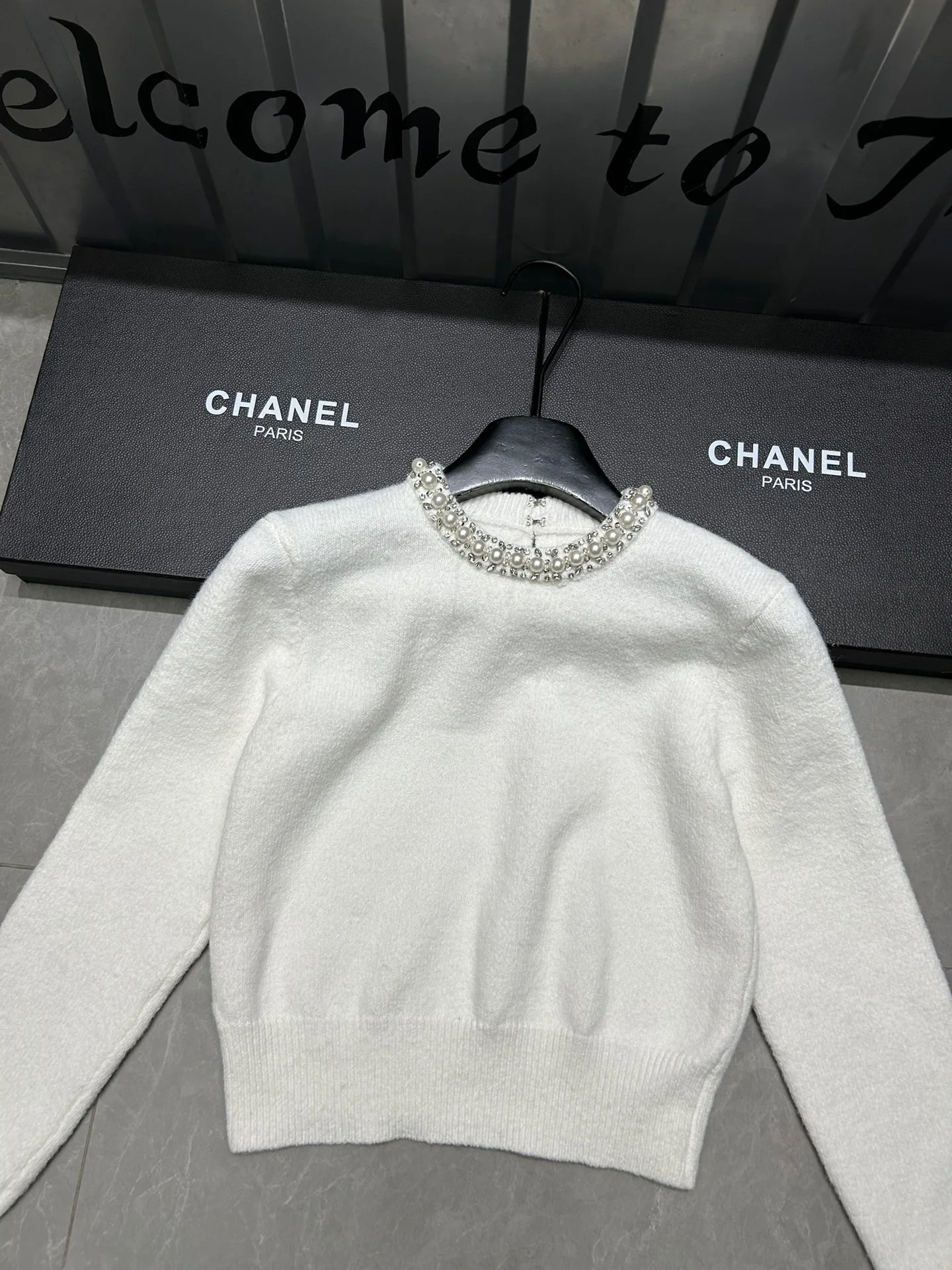
End-of-Season Care and Storage
Proper preparation for storage is essential to ensure your cashmere emerges ready to wear when the next transitional season arrives.
Before storing cashmere for the off-season, ensure it’s completely clean. Hand wash according to care instructions using lukewarm water and specially formulated cashmere shampoo or mild detergent. Rinse thoroughly and press (don’t wring) excess water out between towels. Reshape while damp and dry flat away from direct heat or sunlight.
The ideal storage environment for cashmere is cool, dry, and dark—conditions that discourage both moths and mildew. Folded storage is preferable to hanging for extended periods, as hanging can stretch fibers. For ultimate cashmere storage protection, use breathable cotton storage bags rather than plastic, which can trap moisture and lead to yellowing or mildew.
Effective moth prevention is crucial for preserving cashmere. Natural deterrents like cedar blocks or lavender sachets provide protection without the harsh chemicals that can damage delicate fibers. Refresh these natural repellents regularly, as their effectiveness diminishes over time. For additional protection, store clean cashmere with acid-free tissue paper between folds to prevent creasing.
Addressing Common Cashmere Issues
Even with proper care, cashmere may develop certain issues during transitional wear. Knowing how to address these problems extends the life of your investment pieces.
Pilling—those small balls of fiber that form in areas of friction—is normal for even the highest quality cashmere during initial wears. Remove pills gently using a cashmere comb or fabric shaver specifically designed for delicate knits, working in one direction with light pressure. After the first few wears and proper pill removal, quality cashmere typically stabilizes and pills less frequently.
If your cashmere stretches during wear, restore its shape through proper washing rather than attempting to reshape dry. After washing, gently reshape the damp garment to its original dimensions and dry flat on a towel away from heat sources.
For small holes or weak areas, seek professional repair promptly before damage expands. Specialized reweaving services can often make nearly invisible repairs to valuable cashmere pieces, making the investment worthwhile for quality garments.
Cashmere Wrap Sweaters, Women's Cashmere Pullovers
$75.89 Select options This product has multiple variants. The options may be chosen on the product pageCashmere Cable Knit Sweaters, Women's Cashmere Pullovers
Price range: $111.82 through $112.93 Select options This product has multiple variants. The options may be chosen on the product pageCropped Cashmere Sweaters, Women's Cashmere Pullovers
$155.77 Select options This product has multiple variants. The options may be chosen on the product page- Price range: $102.02 through $109.37 Select options This product has multiple variants. The options may be chosen on the product page
Oversized Cashmere Sweaters, Plus Size Cashmere Sweaters, Women's V-Neck Cashmere Sweaters
$136.87 Select options This product has multiple variants. The options may be chosen on the product pageStriped Cashmere Sweaters, Women's Cashmere Pullovers
$139.68 Select options This product has multiple variants. The options may be chosen on the product page
Investing in Cashmere: Quality Considerations for Transitional Pieces
Not all cashmere is created equal, especially when seeking pieces versatile enough for transitional seasons. Understanding quality indicators helps you make informed investments in pieces that will perform beautifully through temperature fluctuations and provide lasting value.
Evaluating Cashmere Quality
The grade of cashmere significantly impacts its performance in transitional weather. While classifications vary somewhat by manufacturer, Grade A cashmere—featuring fibers under 16 microns in diameter—provides superior temperature regulation and softness compared to lower grades with thicker fibers. This finer fiber creates more effective insulating air pockets while maintaining exceptional breathability.
Fiber length, though not visible to the naked eye, dramatically affects durability. Longer fibers (typically 36mm or longer in premium cashmere) resist pilling and maintain their appearance through repeated wearing and temperature changes. When evaluating cashmere, gently stretch a small area—quality long-fiber cashmere will spring back quickly without excessive sagging.
When physically assessing cashmere, quality pieces should feel substantive yet surprisingly light. The hand should be consistently soft without scratchy areas, and the surface should have a subtle luster rather than a shiny appearance (which often indicates synthetic content or treatment). Quality cashmere also has a springy resilience when gently compressed—it should bounce back rather than remain flattened.
For transitional pieces specifically, evaluate knit density and construction. A tight, even knit typically offers better temperature regulation and durability for pieces that will see frequent wear. Examine stitching under good light—even, consistent stitches indicate careful manufacturing that will withstand the frequent wearing cycle of transitional pieces.
Cost-Per-Wear Value of Quality Cashmere
While premium cashmere represents a significant initial investment, the exceptional durability and versatility of well-made pieces results in remarkable long-term value—particularly for transitional items that see extended seasonal use.
When evaluating cost-per-wear, consider how frequently you’ll use each type of cashmere garment. Versatile pieces like classic V-neck sweaters or simple cardigans that can be styled numerous ways and worn across several months each year offer exceptional return on investment compared to highly seasonal or trendy items with limited wearing opportunities.
The greatest value comes from building a luxurious cashmere capsule wardrobe with intentionality. Begin with 2-3 versatile, high-quality pieces in core neutrals that complement your existing wardrobe and lifestyle. As you experience the performance difference of quality cashmere, strategically add complementary pieces that expand your styling options.
Quality cashmere typically reaches its optimal softness and character after several careful washings, actually improving with proper care over the first few years of ownership—unlike lower-quality alternatives that may deteriorate quickly. This unique quality makes premium cashmere an exceptional investment for transitional wardrobe building.
Is Cashmere Truly Worth It for Transitional Wardrobes?
When considering the investment in cashmere for transitional seasons, many fashion-conscious consumers question whether the premium price delivers corresponding value. Let’s address the most common questions about cashmere’s practicality for these challenging dressing periods.
How does cashmere compare to other popular transitional fabrics?
While merino wool offers excellent temperature regulation at a lower price point, cashmere provides superior softness against the skin and a lighter weight for equivalent warmth. Cotton blends offer washability advantages but lack cashmere’s natural insulation properties and elegant drape. Synthetic performance fabrics may offer technical benefits but typically can’t match cashmere’s luxurious feel or natural temperature regulation.
Will cashmere really work for unpredictable weather?
Cashmere’s natural properties make it uniquely suited for fluctuating temperatures. The hollow core of each fiber traps warm air when needed while allowing heat to escape when temperatures rise. This natural thermoregulation works continuously throughout the day as conditions change—something synthetic alternatives struggle to replicate. Additionally, cashmere’s lightweight nature makes it ideal for layering without bulk when weather requires adaptation.
Is the maintenance worth the effort for transitional pieces that see frequent wear?
While cashmere does require more thoughtful care than synthetic alternatives, quality pieces are surprisingly resilient with proper attention. The natural soil resistance and antimicrobial properties of cashmere actually require less frequent washing than many alternatives. Most maintenance can be handled with simple air-refreshing between wearings, with full washing needed only occasionally. This gentle care routine preserves both the appearance and performance of transitional cashmere pieces.
Where to Find Quality Cashmere for Transitional Styling
Identifying sources for exceptional transitional cashmere requires understanding both what makes cashmere appropriate for changeable weather and how to recognize quality through product descriptions and visual assessment.
When evaluating retailers, look for transparent communication about cashmere quality markers. Reputable sources will specify grade (with Grade A being superior for transitional wear), ply count (1-2 ply for lighter transitional pieces, 3+ for cooler transitions), and often the origin of their cashmere (with Inner Mongolian and Scottish cashmere typically offering excellent quality).
Product descriptions for premium transitional cashmere should detail specific construction features like fully-fashioned seams (which improve durability during frequent seasonal wearing) and reinforcement in high-stress areas. Quality manufacturers will also specify whether the garment is crafted from two-ply yarn (two threads twisted together) which generally provides better durability for transitional pieces that see frequent wear.
Strategic timing can significantly impact the value of your cashmere investment. Traditional retail typically offers the best cashmere selection early in each season (August/September for fall transition pieces, January/February for spring options), while the most advantageous pricing often comes during end-of-season sales. For investment pieces in classic styles, these end-of-season opportunities can provide exceptional value without sacrificing quality.
When shopping online, look for retailers who provide detailed photography showing both the overall garment and close-up texture shots that reveal knit density and finish. Detailed sizing information including actual garment measurements rather than just standard sizing helps ensure proper fit—particularly important for transitional pieces where layering comfort is essential.
Creating a Capsule Transitional Wardrobe with Cashmere as the Foundation
A thoughtfully curated cashmere collection forms the perfect foundation for effortless transitional dressing, providing versatility while minimizing decision fatigue during challenging dressing seasons.
The concept of using cashmere as a wardrobe “anchor” leverages its unique combination of luxury and functionality. By investing in a few exceptional cashmere pieces, you create reliable, adaptable building blocks around which seasonal additions can be rotated. This approach ensures that your core wardrobe maintains consistent quality and performance regardless of seasonal trends.
For a complete yet minimalist transitional wardrobe, focus on acquiring these essential cashmere pieces over time:
- A lightweight crew or V-neck sweater in your most flattering neutral
- A medium-weight cardigan that works as both mid-layer and light jacket
- A versatile cashmere wrap or poncho for dramatic layering and travel
- A fine-gauge cashmere tee or shell as a sophisticated layering foundation
- A statement cashmere piece in a signature color or subtle pattern
With these five quality pieces, you can create dozens of transitional outfits by adding seasonal basics and accessories. The beauty of this cashmere-centered transitional wardrobe approach lies in its simplicity—by focusing your investment on these versatile foundation pieces, you can adapt to seasonal trends through less expensive accessories and complementary items.
This capsule approach particularly shines during transitional seasons when the weather’s unpredictability makes getting dressed challenging. With quality cashmere as your foundation, you maintain consistent comfort and sophistication while easily adapting to each day’s specific conditions through thoughtful layering and accessorizing.
Estate Cloth’s premium cashmere collection offers the perfect starting point for building your transitional wardrobe, with exceptional Grade A fibers and timeless designs engineered specifically for versatile, year-round wear.

